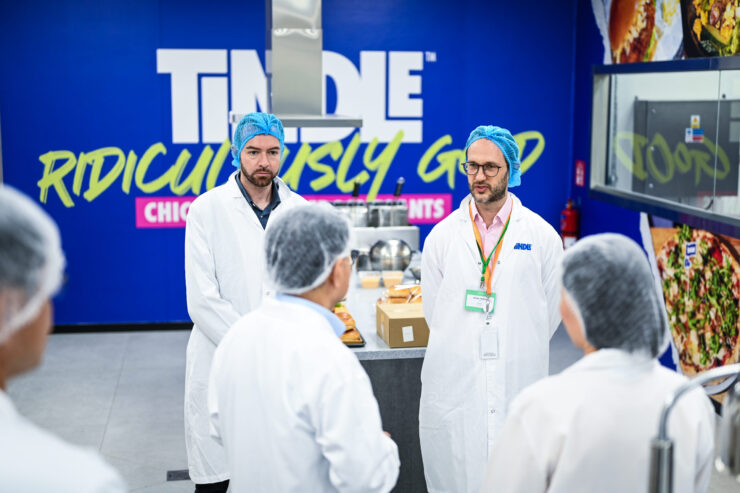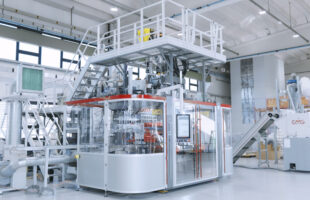
Courtesy of Nurasa
By Cath Isabedra
Unveiled last April 2024, Nurasa’s Food Tech Innovation Centre (FTIC) is set to become a driving force for sustainable food innovation in Asia. With a mission to accelerate the commercialisation of groundbreaking and sustainable food products, Nurasa aims to establish the FTIC as a central hub for industry-leading solutions.
According to Guo Xiuling, CEO of Nurasa, this initiative aligns perfectly with Singapore’s ambitious 30-by-30 food security goals, aiming to produce 30 per cent of its nutritional needs locally by 2030. As Asia grapples with rapid urbanisation and rising populations, food security and sustainability have become paramount concerns. The FTIC’s role in this landscape is to innovate and ensure these innovations are scalable and economically viable, driving meaningful progress in food technology and sustainable nutrition across the region.
The broader context of Nurasa’s efforts includes addressing the inefficiencies and environmental impacts of traditional food production systems. With the increasing urgency to mitigate climate change, there’s a global shift towards more sustainable practices. The FTIC stands out by integrating cutting-edge research, pilot-scaling capabilities, and commercialisation efforts under one roof.
This holistic approach accelerates product development and significantly reduces the steps and costs associated with bringing sustainable food products to market.
By doing so, Nurasa is poised to take charge of transforming Asia’s food landscape, making sustainable nutrition accessible to millions.
Strategic partnerships fueling innovation
Nurasa’s strategic collaborations with entities like ScaleUp Bio and Cremer are pivotal in driving their innovation agenda. These partnerships create a synergistic ecosystem where industry experts, startups, and joint ventures come together to foster impactful innovation.
“There is a very strong understanding at Nurasa that strategic partnerships are one of the key elements of success in driving scalable and sustainable change,” Xiuling notes. The collaboration with Cremer, for instance, has led to the development of a plant-based chicken satay with enhanced texture and taste, showcasing the potential of these alliances.
Such initiatives are crucial as the alternative protein market in Asia is projected to grow significantly, with consumers becoming increasingly health-conscious and environmentally aware.
“We are also expanding our scope from alternative proteins to sustainable nutrition, creating appealing and affordable food options that resonate with the preferences of Asian consumers. This is made possible with collaboration between companies at Nurasa, and is the key to improving the taste of alternative protein products.”
Advanced technologies tackling food production challenges
The FTIC’s integration of advanced technologies, such as precision fermentation and high moisture extrusion, is critical in addressing the pressing challenges of sustainable food production.
Precision fermentation, for instance, allows for the creation of specific proteins and enzymes with high precision, significantly reducing waste and resource consumption. “Precision fermentation requires fewer land and water resources compared to traditional agricultural methods,” Xiuling explains.
This technology is particularly relevant as the food industry seeks to reduce its environmental footprint amidst growing concerns over climate change and resource scarcity. High moisture extrusion, on the other hand, enables the efficient conversion of plant proteins into meat-like textures, providing sustainable alternatives to traditional meat products.
These technologies are not just about innovation for the sake of novelty. They represent a fundamental shift towards more sustainable and efficient food production methods. The global agri-food landscape faces significant challenges, from escalating food prices and supply chain disruptions to climate-related issues like El Niño.
FTIC’s cutting-edge R&D capabilities are crucial in developing resilient and sustainable food systems. By providing centralised access to these technologies, the FTIC not only boosts production efficiency but also accelerates the commercialisation of sustainable food products, making them more accessible and affordable to a broader audience.
From concept to commercial scale
Prefer, a Nurasa member, exemplifies the success of FTIC’s ecosystem in transforming innovative concepts into market-ready products. Faced with the threat of losing 50 percent of coffee farmland by 2050 due to climate change, Prefer developed coffee without coffee beans using fermented grains. This innovative approach addresses the impending coffee crisis and provides a sustainable and scalable solution.
Xiuling explains, “Utilising FTIC’s facilities, the ingredients are blended and fermented with food-grade microbes, then roasted in an oven to enhance flavours. Prefer’s coffee is caffeine-free, but caffeine powder in the form of tea can be added to the mix if desired. Prefer is already being distributed to cafes, bars, restaurants, and hotels for consumption. Their work is continually being further developed to ensure authentic taste, affordability, and sustainability of the coffee for customers and the market.”
Prefer’s journey highlights the importance of leveraging advanced technologies and collaborative ecosystems to tackle global food challenges. The shift towards sustainable alternatives is gaining momentum, driven by consumer demand and environmental imperatives.
FTIC’s role in this ecosystem is to provide the necessary infrastructure and support to transform innovative ideas into commercially successful products. This approach accelerates the development process and ensures the solutions are scalable and economically viable.
Integrating consumer preferences in product development
The NuFood Concept Studio, a key innovation platform at Nurasa, integrates consumer preferences into the product development process, ensuring that new food products resonate with the preferences and needs of Asian consumers.
“We look into pricing strategies, marketing approaches, and pathways to fit the dishes into a wider menu, maximising an overall satisfying experience for our customers,” Xiuling explains.
This practice is critical in a market where consumer preferences are rapidly evolving and driven by increasing health and sustainability awareness. By looking at trends and studying consumer demand, the NuFood Concept Studio ensures that new products are not only nutritious and sustainable but also appealing and affordable.
Nurasa employs a holistic approach to measure the impact and success of innovations developed at the FTIC. Beyond traditional metrics, the focus is on broader indicators that align with their mission of accelerating sustainable nutrition. “We also measure success in more companies using our platform technologies to co-create unique food solutions that focus on holistic nutrition,” Xiuling states.
She furthers, “Of course, we cannot forget customer feedback and satisfaction, which form a crucial part of the evaluation process. At the FTIC, it is measured through various means, including analysing reviews, conducting surveys, and gathering direct feedback from food-tasting sessions. This helps Nurasa understand how well innovations meet consumer needs and preferences, ensuring that the products are not only accepted but also appreciated by the end users.”
Addressing challenges in scaling sustainable food solutions
Scaling sustainable food solutions across Asia presents significant challenges, including limited facilities and infrastructure. Xiuling acknowledges these hurdles, emphasising the role of innovation in overcoming them: “By fostering cross-sector collaborations between government, academia, industry, and capital, talent, expertise, and resources can be leveraged across the value chain initiating impactful scientific breakthroughs.”
She explains, “The majority of Asian regions lack the essential physical and digital infrastructure to manufacture and distribute food on a large enough scale to meet demand, which is partly attributed to inefficient transportation networks and insufficient storage capabilities. Shifting to sustainable food products is even more challenging since there is still a remarkably high reliance on food originating from rural areas. This is why we believe scaling the right ingredients to cater to the region’s consumers is an undeniable difficulty, given limited resources and outdated technology.”
The FTIC exemplifies this principle through public-private partnerships, offering shared infrastructure and equipment to support pilot-scale efforts and lower barriers to entry for new ideas. This collaborative spirit is especially critical in Asia, where traditional food production methods are deeply entrenched, and innovation is needed to drive meaningful change.
By providing a platform for collaboration and innovation, the FTIC is helping to bridge the gap between traditional practices and modern, sustainable solutions that accelerates the development and commercialisation of new products.
Collaboration with government and regulatory bodies is essential to Nurasa’s initiatives. Xiuling emphasises the importance of complying with regulatory frameworks to ensure food safety and quality. Increased investment in research and development, coupled with public-private partnerships, can bolster efforts to foster technological advancement and reduce costs over time. “By fostering collaboration with government and policymakers, we can form comprehensive guidelines for innovators to adhere to in the development of food quality and production efficiency,” Xiuling explains.
Future innovations in food technology
Xiuling is excited about emerging technologies like AI and personalised nutrition. AI can improve production efficiency and provide insights into consumer preferences, while personalised nutrition offers tailored dietary recommendations based on individual genetic makeup and health data. Innovations in smart packaging also promise to reduce food waste and enhance food safety.
“These technologies present incredible opportunities for collaboration, development, and implementation, driving our industry towards a more efficient, cost-effective, and sustainable future,” Xiuling concludes.
By staying at the forefront of these trends, Nurasa and the FTIC are well-positioned to drive the next wave of innovation in food technology. These advancements will enhance production efficiency and sustainability and provide consumers with more nutritious and personalised food options, ultimately contributing to a healthier and more sustainable future.
This story first came out in our “Seeds of Change: The Urban Farming Phenomenon in Asia and Beyond” issue.









